Hildreth Meière Documentary Series - Watch Trailer
Hildreth Meière Documentary Series - Watch Trailer
Iconographer: Joseph A. SkellyMedium: glazed ceramic tileExecuted by: R. GuastavinoClosed to public
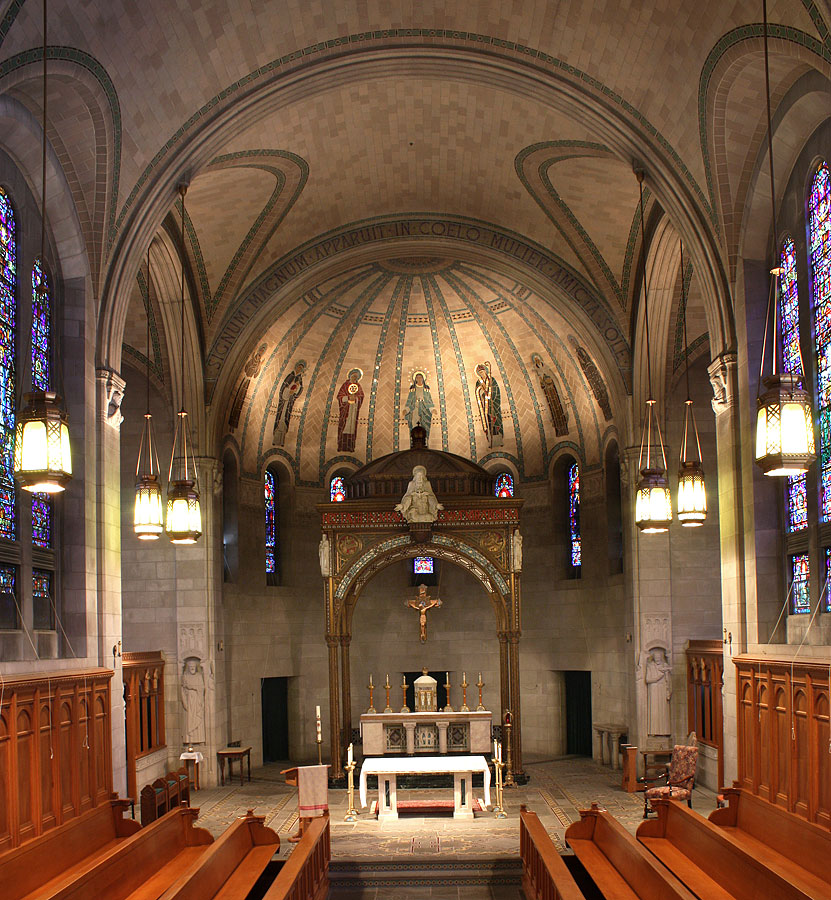
Mary Queen of All Saints Chapel
A commission to decorate the apse vault of the Mary Queen of All Saints Chapel being built in conjunction with the Mary Immaculate Seminary at Northampton in 1938 brought Hildreth Meière once again in touch with the R. Guastavino Company, which had executed several of Meière’s commissions in glazed ceramic tile at the Nebraska State Capitol fifteen years earlier.
Meière had also worked with Guastavino at the University of Chicago’s Rockefeller Memorial Chapel. In Chicago, as in Nebraska, Meière had created hexagonal medallions containing individual figures in colorful, glazed ceramic tile. In order to maintain good acoustics at both sites, these medallions had been set into a ground of Guastavino’s Akoustolith tile. By contrast, at Mary Queen of All Saints Chapel, Meière designed seven large figures of Mary and saints in large, shaped pieces of colored Akoustolith tile set into an Akoustolith tile ground. Meière painted their facial features in black, a technique similar to that used for details on stained glass. She also indicated each saint’s halo in rectangular pieces of glazed ceramic tile:
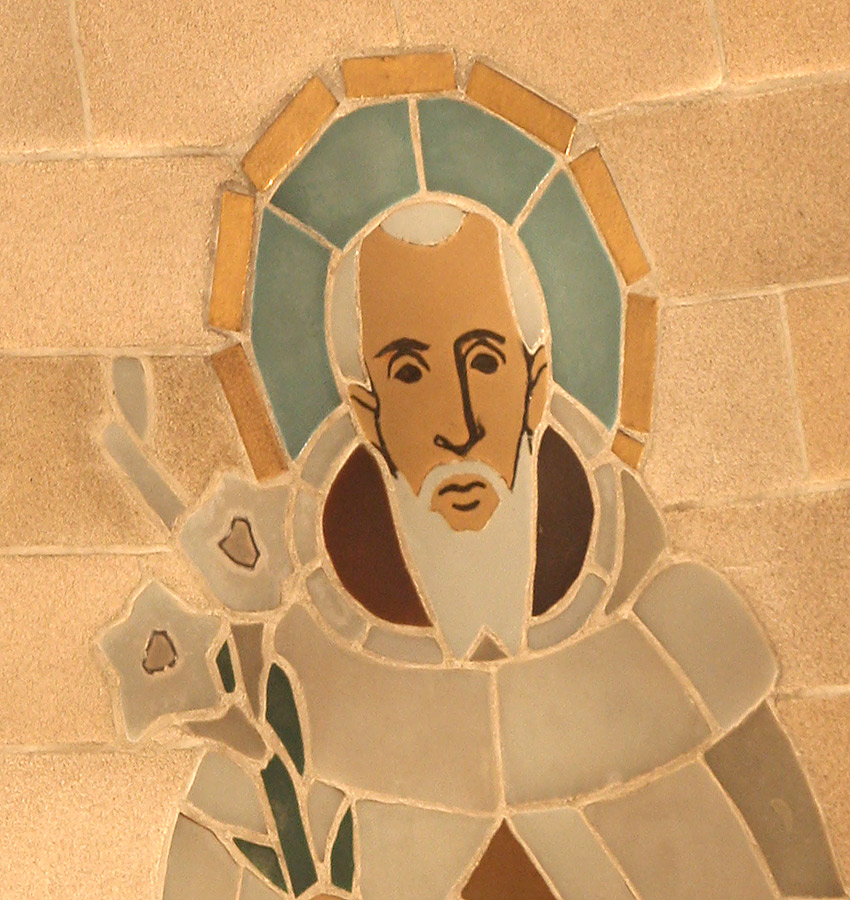
Detail of St. Simon Stock
Meière separated her seven figures using vertical bands of colored, glazed ceramic tile in a repetitive geometric pattern. The pattern consists of shiny, glazed ceramic tile diamonds in gold, and rectangles and squares in brown affixed to a matt green Akoustolith tile base. Each complete patterned tile measures 13 ¾ by 6 ¾ by 1 ½ inches:
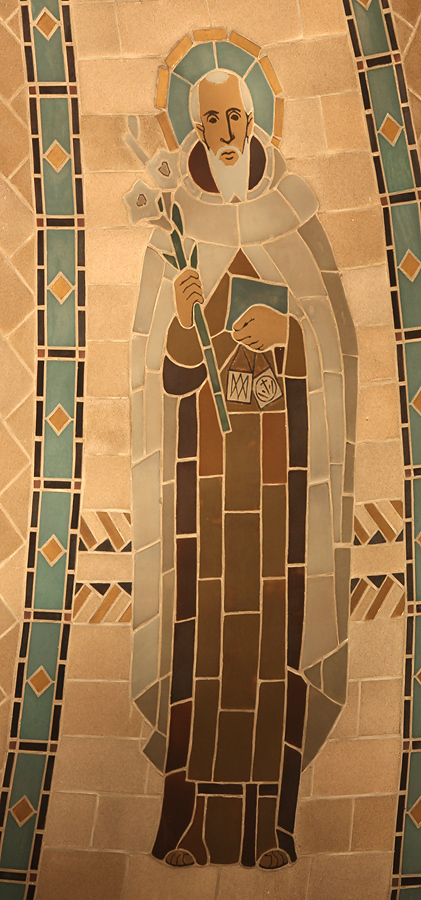
St. Simon Stock
Meière further outlined the vaulting and the windows with this same geometric band, so that it becomes a unifying element throughout the chapel. This simplified design may well have been in response to financial considerations. Meière received $1,000 to provide Guastavino with cartoons for the commission.1
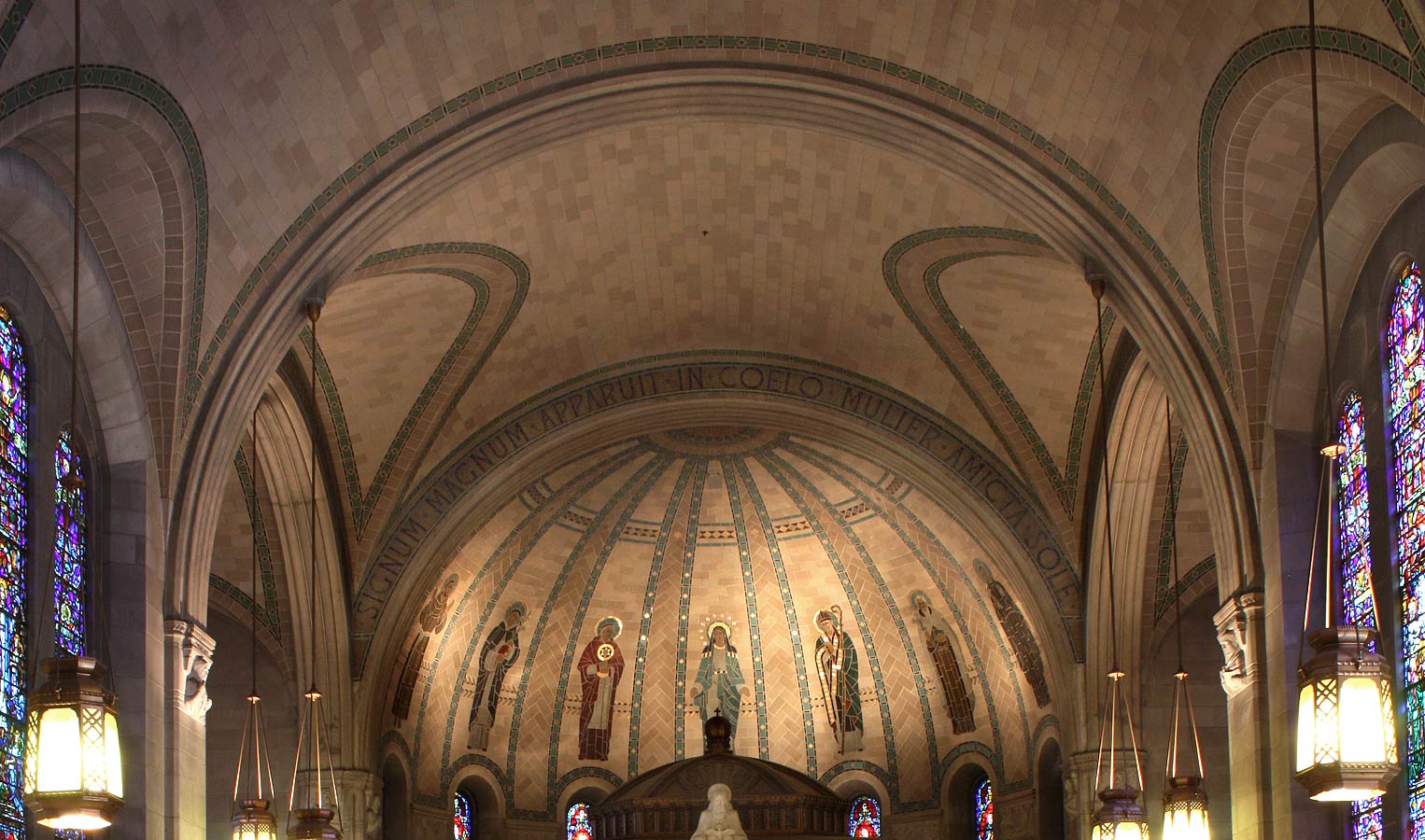
Continuous geometric band decorates chapel
Joseph A. Skelly, Director of the Central Association of the Miraculous Medal in Germantown, was responsible for the iconography at the seminary. He explained to Meière the requirements of the commission:
The central of the seven figures is to be a likeness of the Blessed Virgin Mary. For your guidance I am enclosing herewith a photograph of the face of the Statue of the Virgin in our Central Shrine in Germantown. . . so that you may carefully note the type of face we desire in this cartoon. The saint-subjects for the other six figures are to be furnished you by us, and we stress particularly the importance of having the faces as authentic as possible. We are now endeavoring to secure for you photographs in color of the saints which will have the authentic faces.2
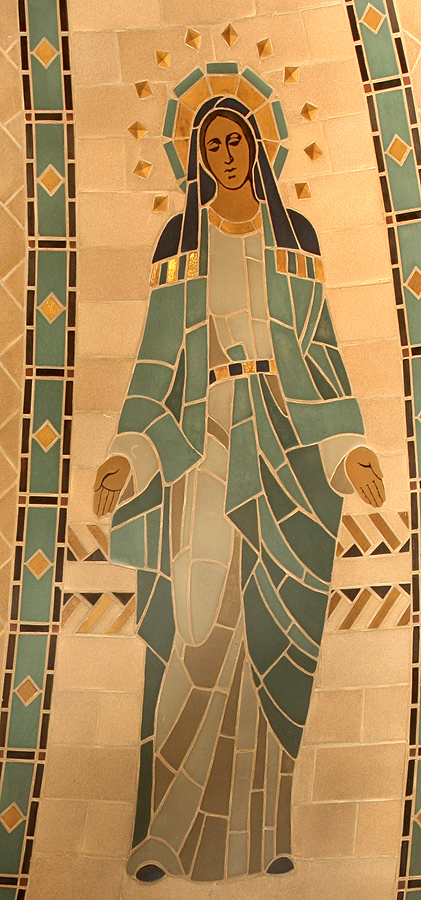
The Blessed Virgin Mary
Skelly next sent Meière a memorandum showing the Order of Placement of the figures, with a description of the importance of each saint. It showed the Virgin Mary in the center, with St. Alphonsus Ligouri, St. Bernard, and St. Francis of Assisi on the left and St. Simon Stock, St. Dominic Guzman, and St. Ephrem on the right. Skelly told Meière that she was free to reverse the placement of St. Bernard and St. Dominic, but she was to consult with him on the “exact blue used” for the Blessed Virgin, whose garment was to be depicted in blue and white. Skelly sent Meière pictures to illustrate the garments the saints were to wear.3 He also told her that the selection of saints to be depicted was not final.
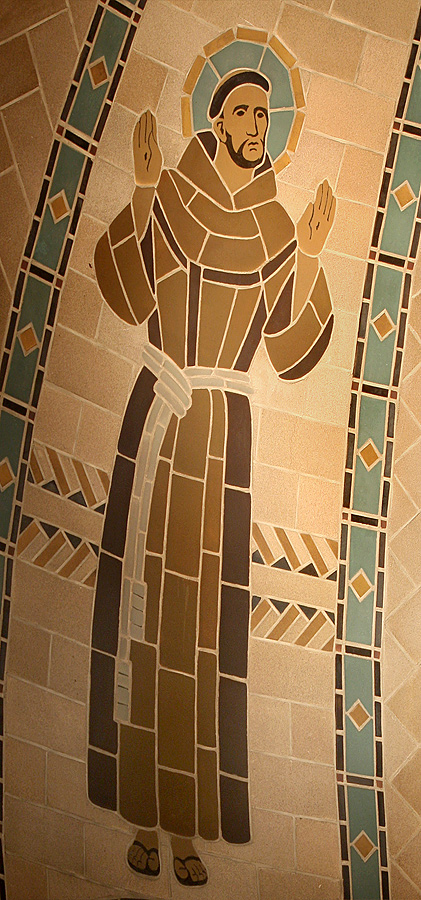
St. Francis of Assisi
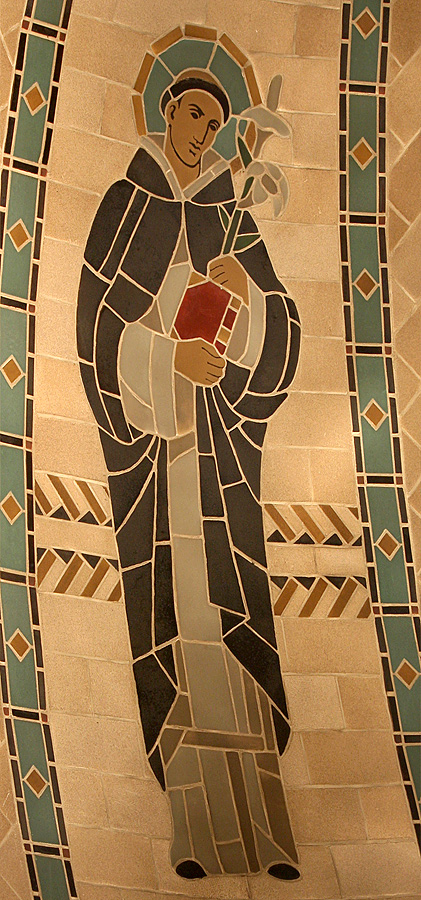
St. Bernard
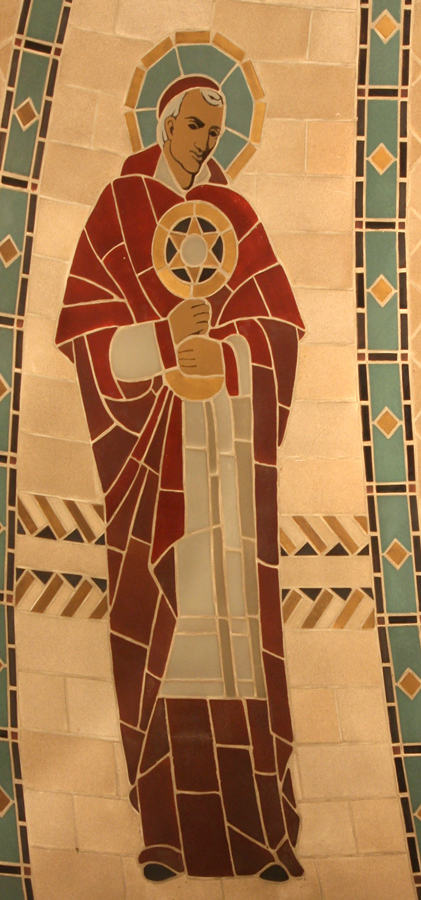
St. Dominic Guzman
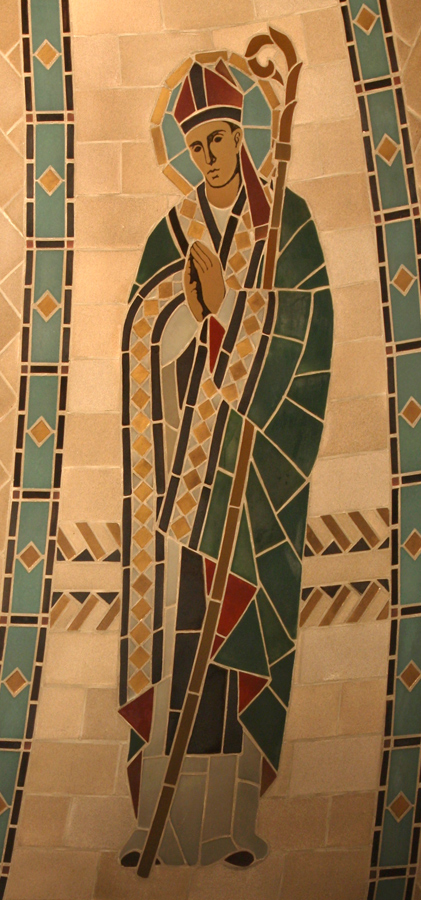
St. Alphonsus Ligouri

St. Simon Stock
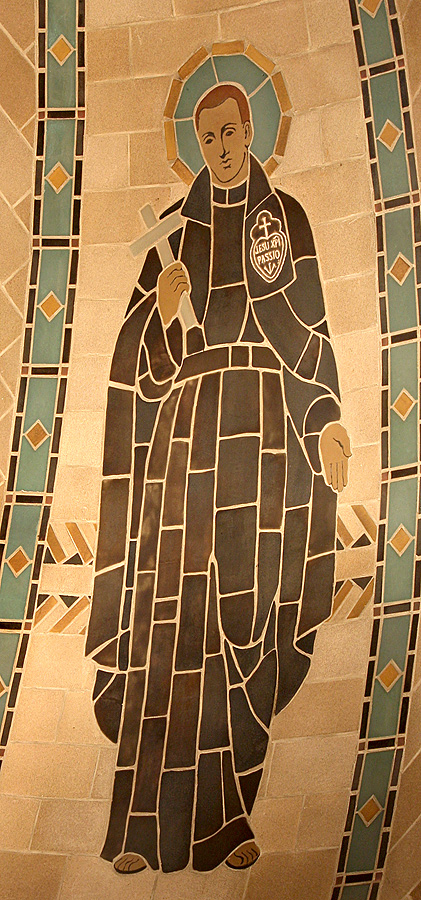
Likely St. Paul of the Cross
When Skelly visited Meière in her studio in June 1938, he was pleased with the “splendid progress” she had made.4 By the beginning of October 1939, having completed the installation, Guastavino returned Meière’s cartoons.5 At the end of October, Skelly wrote to Meière, “We are very well pleased with your work as well as with the finished panels, and it occurs to me that you might like to visit the new Seminary and see the work in place.”6
When the seminary closed in 1990, as many as five hundred men had been ordained in the Mary Queen of All Saints Chapel. In 1996, the Roman Catholic Archdiocese of Philadelphia bought the seminary and opened it as the Mary Immaculate Center for spiritual retreats.7 The Center has since closed, and the building and extensive acreage are for sale., Although the chapel is no longer open to the public, Meière’s apse ceiling in the Mary Queen of All Saints Chapel remains in excellent condition.
Joseph A. Skelly, letter to Meière, June 3, 1938, Hildreth Meière Papers, Archives of American Art, Smithsonian Institution, Washington, DC.
Skelly, letter to Meière, June 3, 1938. HM Papers.
Skelly, letter to Meière, June 8, 1938, HM Papers.
Skelly, letter to Meière, June 13, 1938. HM Papers.
R. Guastavino Company, letter to Meière, October 5, 1939, HM Papers.
Skelly, letter to Meière, October 26, 1939, HM Papers.
See timeline on website www.maryimmaculatecenter.org.